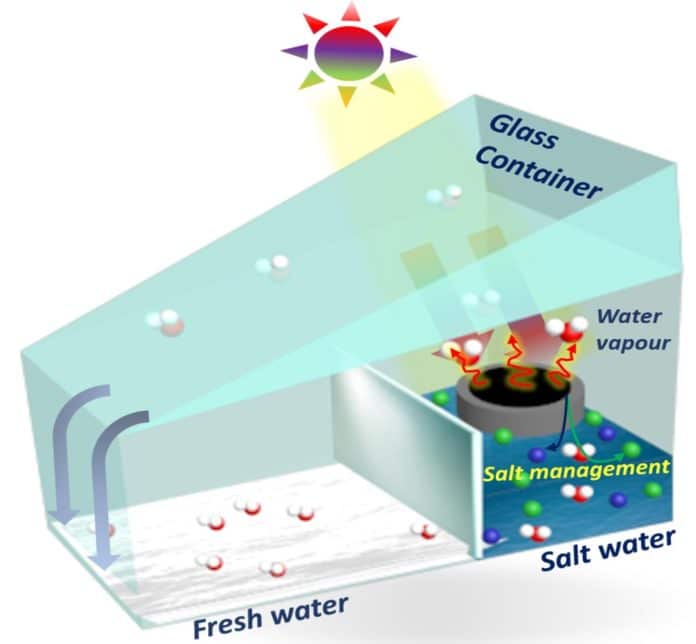Seawater desalination is a process through which salt and other constituents are removed to produce pure water. Due to its energy consumption, the desalination cost is extremely high.
UNIST scientists recently unveiled an innovative, low-cost seawater desalination device that transforms seawater into drinking water. The device effectively captures the sun’s energy and improves freshwater conversion and device performance, and durability.
What’s more, it is easy to construct via 3D printing methods. This solar printed solar evaporator can efficiently utilize solar energy (99%) with an evaporation rate of 1.60 kg m–2 h–1 and efficiency of 89% under one sun irradiation.
The efficiency of a solar-driven water evaporation system is limited due to the lack of a proper design for the evaporator to deal with either a large amount of heat loss or salt accumulation.
Scientists addressed these issues via two cost-effective approaches: (1) A rational design of a concave-shaped supporter by 3D-printing that can promote the light-harvesting capacity via multiple reflections on the surface, 2) The use of a double-layered photo absorber composed of a hydrophilic bottom layer of a polydopamine (PDA) coated glass fiber (GF/C) and a hydrophobic upper layer of a carbonized poly(vinyl alcohol)/polyvinylpyrrolidone (PVA/PVP) hydrogel on the supporter, which provides competitive benefit for preventing deposition of salt while quickly pumping the water.
Professor Ji-Hyun Jang in the School of Energy and Chemical Engineering at UNIST said, “We envision that this design of the solar evaporator can help in providing freshwater robustly and cost-effectively while maintaining stable performance over a long period.”
Journal Reference:
- Sourav Chaule, Jongha Hwang, Seong-Ji Ha, et al., Rational Design of a High Performance and Robust Solar Evaporator via 3D-Printing Technology. Adv. Mater., (2021). DOI: 10.1002/adma.202102649
